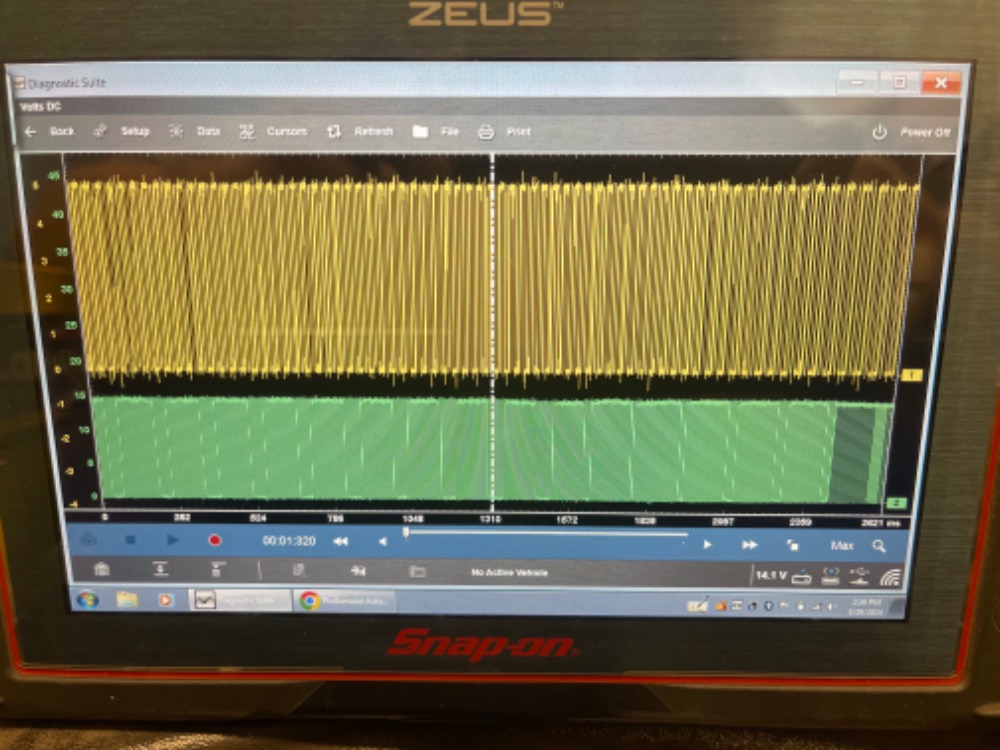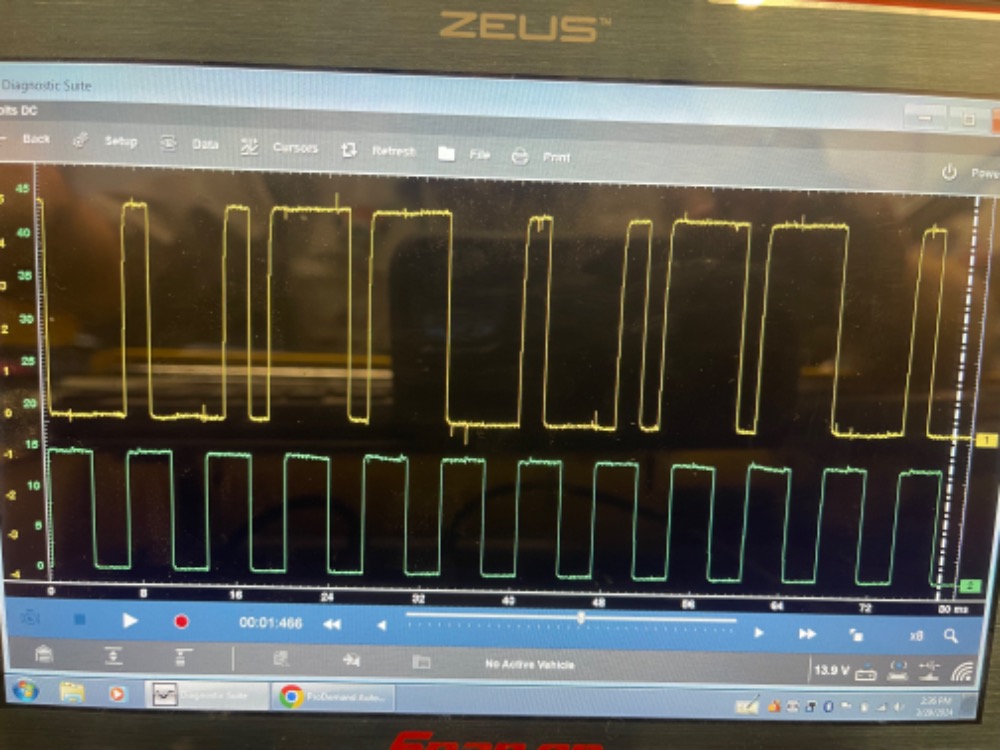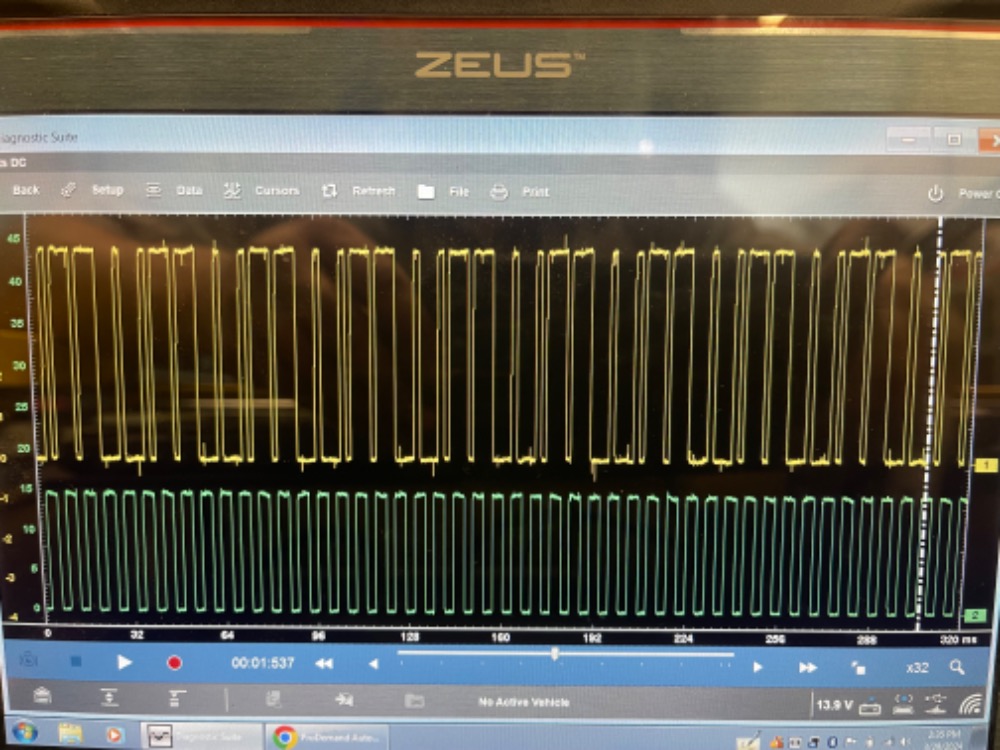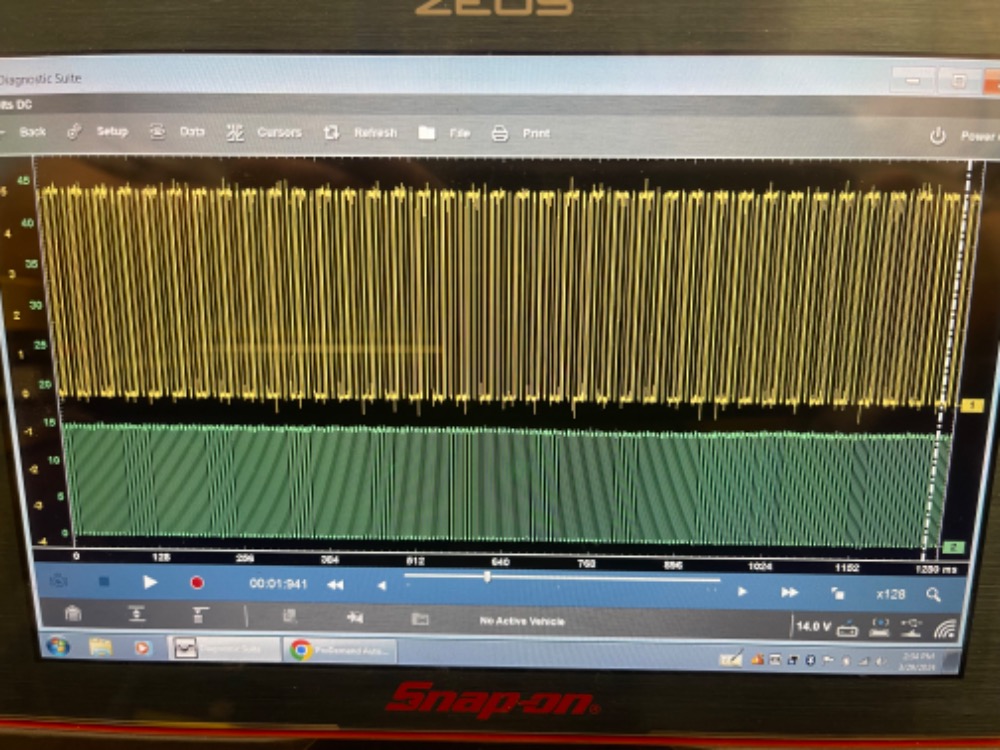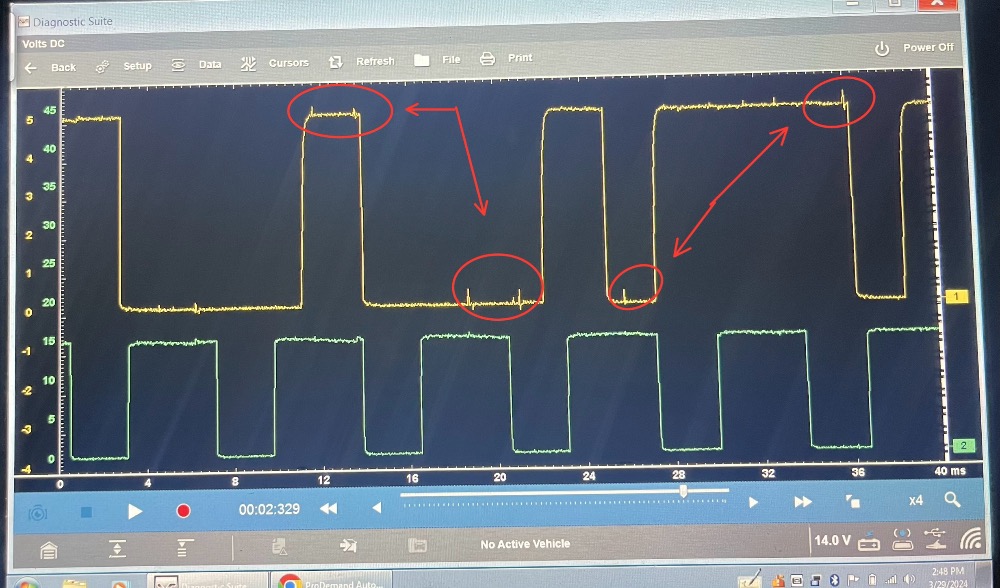*** Restricting New Posts to SD Premium Members ONLY *** (09 May 2025)
Just made a new account? Can't post? Click above.
Interpreting data cam sensor
- XsleepercellX
-
Topic Author
- Offline
- Senior Member
-

Less
More
- Posts: 59
- Thank you received: 7
1 year 8 months ago - 1 year 8 months ago #65141
by XsleepercellX
Interpreting data cam sensor was created by XsleepercellX
Not sure that year make and model are necessary but it’s a 2010 Benz GLK 3504matic 3.5. Came in with a code in memory, engine light was on but no longer on currently during this diag. p0025. Anyway the yellow trace in the picture below is my cam signal and the green trace is the solenoid phaser oil control. Idk if said that right. Either way my issue is identifying a glitch/drop out in a signal. The yellow trace looks full of these so called glitches and dropouts while my green trace looks fine. I guess my question is are all the spikes in my yellow trace considered to be glitches/dropouts or am I wrong? The photos I added start zoomed out for detail and slowing taking a closer look at what I’m seeing.. not sure why they came out blurry but I posted another pic with red circles with arrows pointing out what I’m assuming and asking if these are considered glitches/dropouts and would I be accurate in assuming these aren’t normal?
Last edit: 1 year 8 months ago by XsleepercellX.
Please Log in or Create an account to join the conversation.
- juergen.scholl
-

- Offline
- Platinum Member
-

- Active partschanger
Less
More
- Posts: 1230
- Thank you received: 462
1 year 8 months ago - 1 year 8 months ago #65147
by juergen.scholl
An expert is someone who knows each time more on each time less, until he finally knows absolutely everything about absolutely nothing.
Replied by juergen.scholl on topic Interpreting data cam sensor
What I see in your captures is what I would call "noise". Imo it does not alter the signal auqisition/processing by the ecm.
Typically and based on experince an 80/20 rule applies for the recognition of changes in state of thes kind of pulsed signal. In your case of a 5 volt peak voltage the noise would have to pass a treshold of 1V when rising or 4V when descending in order to be a "glitch". I don't see this happening in your images.
Did you eventually use peak detect on the yellow channel only?
Typically and based on experince an 80/20 rule applies for the recognition of changes in state of thes kind of pulsed signal. In your case of a 5 volt peak voltage the noise would have to pass a treshold of 1V when rising or 4V when descending in order to be a "glitch". I don't see this happening in your images.
Did you eventually use peak detect on the yellow channel only?
An expert is someone who knows each time more on each time less, until he finally knows absolutely everything about absolutely nothing.
Last edit: 1 year 8 months ago by juergen.scholl.
The following user(s) said Thank You: Noah, XsleepercellX
Please Log in or Create an account to join the conversation.
Time to create page: 0.239 seconds

